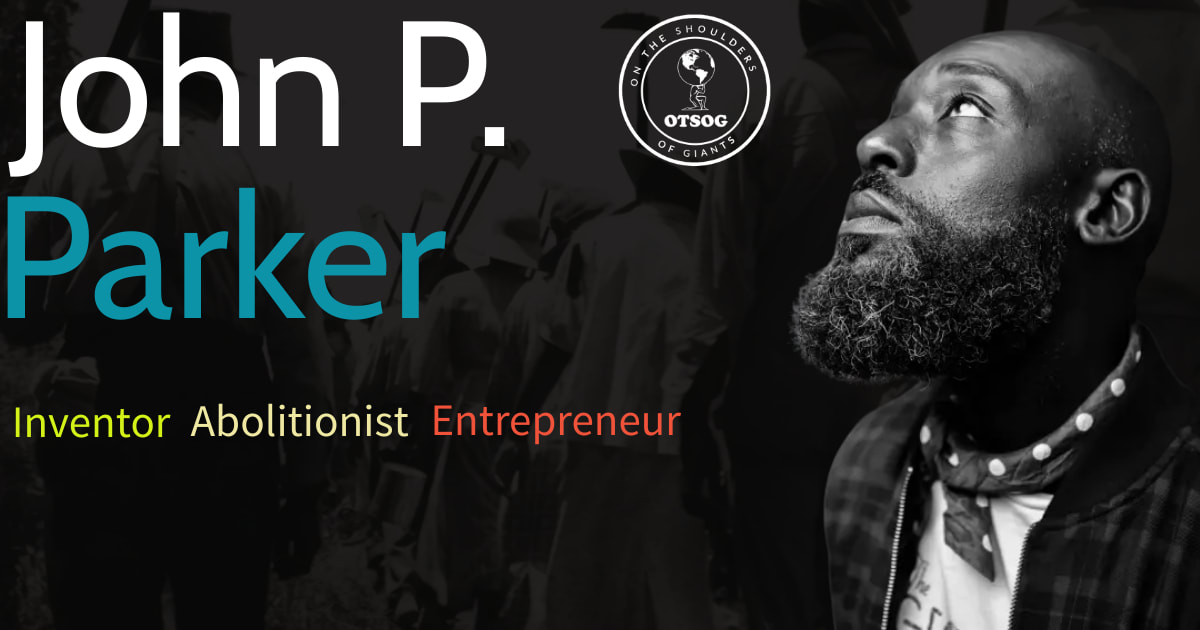|
In 1827, a black woman enslaved in Norfolk, Virginia gave birth to a baby boy named John P. Parker. The father of John P. Parker was a white aristocrat in the state of Virginia. At the age of eight, Parker was sold away from his mother to a plantation in Richmond, Virginia for six months, before being sold again to a plantation in Mobile, Alabama. Parker and other people sold to the plantation in Mobile were chained together and walked from Richmond, Virginia to Mobile Alabama. Only being eight years old, John P. Parker experienced slavery, was sold away from his mother, and chained to other enslaved people forced to walk 860 miles. Once Parker reached Mobile, he was purchased by a physician to work as a house servant. Parker became friends with the physician’s sons, who taught John Parker to read. They would sneak books from their father’s library for Parker to read, helping him increase his intellectual capacity, eventually making him unfit to be enslaved. By the age of 13, Parker became the apprentice to the physician in an iron foundry as an iron molder. In 1843, Parker attempted to attend college with the physician's sons but was brought back to Mobile by the physician, he feared that Parker would use the information he learned to escape slavery. Parker became a very skilled Iron molder but he also wanted his freedom. He attempted to escape the physician's plantation but was caught and returned. Parker was also known for clashing with other workers within the iron foundry. As a result, the physician sold parker to a foundry owner in New Orleans. Not long after working at the foundry in New Orleans, Parker began having issues with fellow foundry workers again. To avoid working the fields in New Orleans, and decreasing his chance to buy his freedom, Parker found a way to eliminate his issues with other workers in the foundry. Despite changing how he interacted with fellow foundry workers, Parker’s owner was still considering selling him. Parker devised a plan to gain his freedom that included convincing a white woman named Elizabeth Ryder to purchase him. Parker was sold to Ryder, but little did the slave owner know, that Ryder purchased Parker with Parker’s own money. The transaction made Parker a free man. With his freedom papers, Parker traveled North to Indiana, and then to Cincinnati, where he began working in a foundry and helping black people escape slavery via the Underground Rail Road. In addition to working in a foundry, Parker also worked as a barber. As a conductor on the Underground Rail Road, Parker helped many black people reach the North using the Ohio River. He was known for traveling the river South into Kentucky bringing people back to freedom. There are stories of Parker fighting off slave masters, helping young black girls travel the Ohio River, and even sneaking into a slave owner's home to take a baby, so its parents could escape their plantation without the child being used to hold them hostage. Parker moved from Cincinnati to Beechwood Factory, Ohio in 1848 where he opened and operated a general store for two years. Parker also married a woman named Miranda Bolden in 1848, the couple produced eight children. He moved to Ripley, Ohio in 1850 where he worked at a local foundry and also worked with the abolitionist Reverend John Rankin, continuing as a conductor on the Underground Rail Road. Between 1850 and 1863, John P. Parker helped over 1,000 black people gain their freedom. Parker did partner with other abolitionists, but he avoided working with church groups because he didn’t think they could ultimately be trusted. In 1854, Parker used the iron molding skills he gained at the age of 13 to found his own iron foundry, the Ripley Foundry and Machine Company, where he molded iron; created plaster moldings; and manufactured and repaired side valve engines. In 1863, Parker along with a number of black men joined the Union Army. Parker was assigned to be a recruiter for the 27th Regiment U.S. Colored Troops until the Union won the Civil War. In 1871, Parker along with a man named William Hood founded the Phoenix Foundry, a business that lasted until 1889. Between the years 1871 and 1889, the Phoenix Foundry was able to employ around 10 and 25 black employees. During that same time span, Parker was named the 27th wealthiest person in Ripley, Ohio. Parker was not only a business owner and abolitionist, but he was also an inventor. He patented the tobacco press in 1884, the portable tobacco press in 1885, and the soil pulverizer in 1890. He also earned money with his flour milling business in 1884. In 1889, the building the foundry occupied burned down, the building was also Parker's home. He soon rebuilt his home and his business, he renamed the business the J.P. Parker Foundry, a business that lasted until 1890. John P. Parker died in Ripley, Ohio in 1900. His life and legacy were honored by restoring his home and converting it into a museum and historic landmark in 1997, by the John P. Parker Historical Society. His autobiography, His Promised Land: The Autobiography Of John P. Parker, Former Slave And Conductor On The Underground Railroad, was published in 1996. The Opera “Rise To Freedom” was inspired by Parker's life, and the John P. Parker School was established in Cincinnati, Ohio. To Mr. John P. Parker, we proudly stand on your shoulders. J.A. Ward Click here to support the OTSOG book series. References: https://www.blackpast.org/african-american-history/parker-john-p-1827-1900/ https://aaregistry.org/story/john-p-parker-abolitonist-and-inventor/ https://www.uh.edu/engines/epi1521.htm https://ohioarchaeology.org/component/content/article?id=99:underground-at-the-underground-railroad-testing-at-john-p-parkers-house
0 Comments
Leave a Reply. |
Details
Categories
All
Click Here to join our mailing list
|
Contact Us: |
Connect With Us |
Site powered by PIT Web Design


 RSS Feed
RSS Feed



